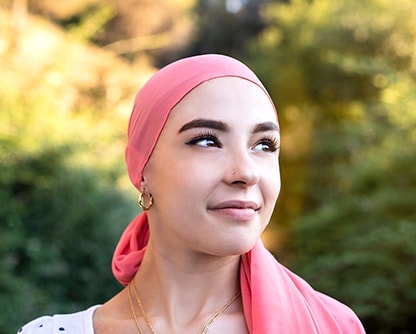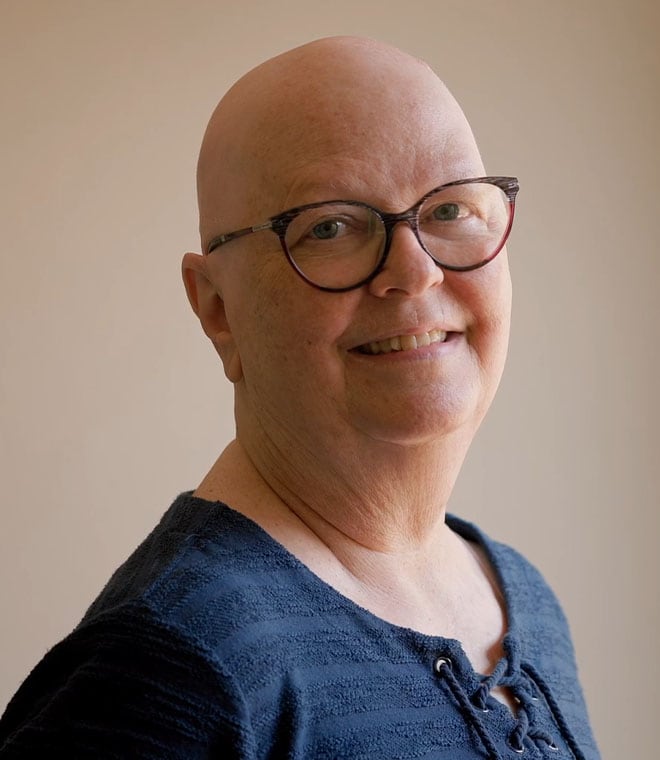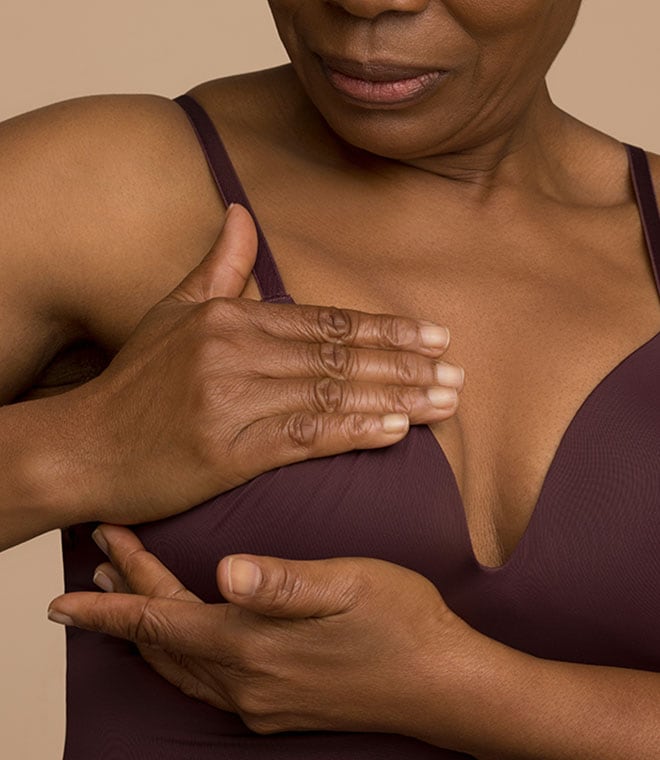Health
What are the different types of breast cancer?
By Nancy Kupka, PhD, RN Nov 19, 2022 • 9 min
A woman receives a breast cancer diagnosis about every 2 minutes in the U.S. About 1 out of every 100 breast cancers diagnosed in the United States is found in a man. Many people don’t realize that there are different types of breast cancers, which can help determine treatment options and prognosis.
Generally, cancer is a disease in which cells divide uncontrollably. When that growth becomes uncontrolled, it can form a mass called a tumor. Types of cancer are usually named for the tissues or organs that they originate from. To understand the different types of breast cancers — medullary, ductal, Paget’s disease, invasive, noninvasive, lobular, etc. — it is helpful to know a little about the breast's anatomy.
The breast is composed of several types of tissues:
- Glandular tissues include the glands (lobules) that produce milk and the milk passages, or ducts
- Stromal tissues are the fatty and fibrous connective tissues that support the breast
- Lymphatic tissues remove cellular fluids and wastes
Cancer can begin in any of these tissues and remain there, spread to other parts of the breast, or spread to other parts of the body. Metastatic breast cancer is defined as cancer that has spread to other parts of the body. Generally, cancer is a disease in which cells divide uncontrollably. When that growth becomes uncontrolled, it can form a mass called a tumor.
Cancers can also be noninvasive or invasive. Cancers that are confined to the ducts and do not invade surrounding tissues are called noninvasive or preinvasive. Invasive ductal carcinoma (IDC) is ductal breast cancer that has spread beyond the ducts into the lobules or fatty tissue of the breast or to other areas of the body.
Types of breast cancer
Most cancers begin in the cells that line the ducts. IDC accounts for about 80% of all breast cancer diagnoses. There are several subtypes of IDC:
- Medullary carcinoma: A soft, fleshy mass in the breast that accounts for about 3% to 5% of all cases of breast cancer.
- Mucinous carcinoma: Also called "colloid carcinoma," is when tumor cells float in mucin, which is part of mucus. Research suggests that about 2% to 3% of invasive breast cancers are solely mucinous, and about 5% of invasive breast cancers have a mucinous component within them.
- Tubular carcinoma: Cancer that is made up of tube-shaped structures. Women with tubular carcinoma generally have a better prognosis than women with more common types of invasive carcinoma, as it is often identified in mammograms.
- Ductal carcinoma in situ (DCIS): A noninvasive pre-breast cancer in which the abnormal cells are contained in the milk ducts. DCIS can be found alone or with invasive breast cancer, but it is still treated if alone, as it can advance to breast cancer.
Not all breast cancers occur in the ducts.
- Invasive lobular carcinoma (ILC): Originates in the milk-producing glands (lobules) and can spread to other parts of the body. About 10% of invasive breast cancer is ILC.
- Paget disease of the breast: Also known as Paget disease of the nipple and mammary Paget disease, it is a rare type of cancer involving the skin of the nipple and often the darker circle of skin around it. Most people with Paget disease of the breast also have one or more tumors inside the same breast that are either ductal carcinoma in situ or invasive breast cancer.
- Phyllodes (or Phylloides) tumors: Rare breast tumors that develop in the connective tissues of the breast and can be surgically removed. They are usually benign but may become cancerous and spread to other parts of the body.
- Inflammatory breast cancer: Breast appears red and warm with dimples or ridges over the breast caused by cancer cells blocking lymph channels in the skin. Although inflammatory breast cancer only accounts for about 1% of breast cancers, it is extremely fast-growing.
- Angiosarcoma: Rare cancer that starts in the cells that line blood or lymph vessels. Often a complication from previous radiation treatment to the breast, it can occur 10 years after radiation.
Hormones, proteins and breast cancer
Treatment for breast cancer is often further guided by hormone sensitivities that may be present in the cancer cells. Most, but not all, breast cancer cells have these hormone receptors:
Estrogen receptor-positive (or ER+)
A cancer is called estrogen receptor-positive (or ER+) if it has receptors for estrogen, and progesterone receptor-positive (PR+) if it has progesterone receptors. About two-thirds of breast cancer cases test positive for one or both of these hormone receptors. Cancers that have ER+ receptors or PR+ receptors are treated with hormones to slow or even stop their growth. If the cancer does not have either of these receptors (hormone receptor-negative), hormonal therapy is unlikely to work and other types of treatment will be recommended.
HER2 protein
About 20% of breast cancers make too much human epidermal growth factor receptor 2 (HER2) protein. In healthy breast cells, the HER2 stimulates cell growth, but when there is too much HER2 protein, the cells grow and divide too quickly. Hormonal therapies are also used on HER2 positive breast cancers.
About 10% to 20% of breast cancers test negative for both hormone receptors and excess HER2, which means they are triple-negative and unlikely to respond to hormonal therapy. Triple-positive breast cancers have too much of both hormone receptors and too much HER2. The interaction between the receptors makes this type of cancer difficult to treat.
Ki-67 protein
HER2 is not the only protein that affects tumor growth. Ki-67 is a protein in cells that increases as cells prepare to divide, and the level of Ki-67 can inform the expected growth of tumors that start in the luminal or inner cells lining the mammary duct. Luminal A (Type A) breast cancer is ER+ and/or PR+, HER2 negative, and has low levels of the protein Ki-67. These cancers tend to grow slowly. Luminal B breast cancer is ER+ only, both ER+ and PR+, and either HER2 positive or HER2 negative with high levels of Ki-67.
The ability of some cancers to have (or not have) receptors can change over time. Hormone receptor-positive breast cancers can lose their receptors and hormone receptor-negative cancers can gain receptors. If the breast cancer recurs (returns), a biopsy will be repeated to determine if hormonal therapy can be used.
Every cancer is different, just like every person, and each individual’s response to treatment is different. It is important to work closely with an oncology provider who understands the individual's needs and tailors treatment to the specific person as well as the specific cancer.
Published February 2020. Clinically reviewed and updated by Nancy Kupka, PhD, RN, November 2022.
Sources:
- https://www.ncbi.nlm.nih.gov/pmc/articles/PMC3255438/
- https://blog.dana-farber.org/insight/2018/05/difference-cancer-tumor/
- https://www.cancer.org/cancer/breast-cancer/understanding-a-breast-cancer-diagnosis/types-of-breast-cancer/invasive-breast-cancer.html
- https://www.breastcancer.org/symptoms/types/medullary
- https://www.breastcancer.org/symptoms/types/mucinous
- https://www.breastcancer.org/symptoms/types/tubular
- https://www.ncbi.nlm.nih.gov/books/NBK542223/
- https://ww5.komen.org/BreastCancer/RecommendedTreatmentsforDuctalCarcinomaInSitu.html
- https://www.cancer.gov/types/breast/paget-breast-fact-sheet
- https://www.cancer.gov/types/breast/breast-changes
- https://www.breastcancer.org/symptoms/types/phyllodes
- https://www.cancer.org/cancer/breast-cancer/understanding-a-breast-cancer-diagnosis/types-of-breast-cancer/angiosarcoma-of-the-breast.html
- https://www.breastcancer.org/symptoms/types/molecular-subtypes
- https://www.breastcancer.org/symptoms/diagnosis/hormone_status
- https://www.cancer.org/cancer/breast-cancer/understanding-a-breast-cancer-diagnosis/types-of-breast-cancer.html
- https://doi.org/10.1155/2018/7835095
- https://pubmed.ncbi.nlm.nih.gov/28523293/
- https://ww5.komen.org/BreastCancer/SubtypesofBreastCancer.html
- https://www.spandidos-publications.com/10.3892/mmr.2014.2914




